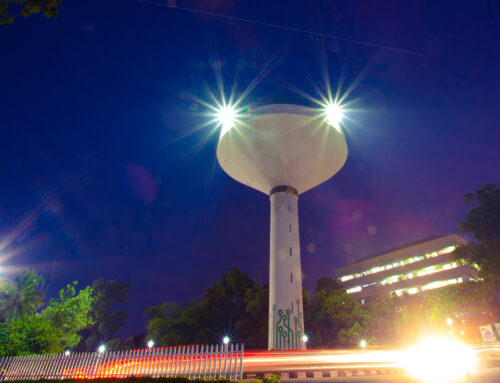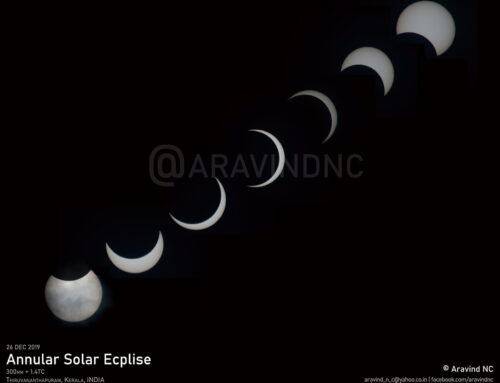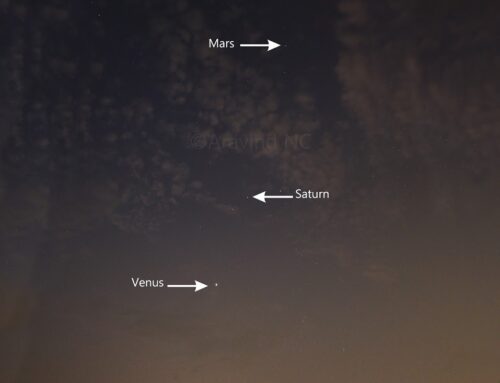This is my second experience in capturing a comet. This time its Lovejoy. The photo was taken from Thiruvananthapuram (Google Map). The sky was too polluted due to the nearby airport lights, so direct single capture was impossible. And I’ve managed it by taking multiple shots of dark, light, flats and biased pics using a prime lens(50mm) with f/2.8 and processed using Registax.
Here is the output,

Date: INDIA on 24th Jan 2015 7:30 PM. The image is taken without telescope, using DSLR with 50mm lens.
C/2014 Q2 (Lovejoy) is a long-period comet discovered on 17 August 2014 by Terry Lovejoy using a 0.2-meter (8 in) Schmidt–Cassegrain telescope. It was discovered at apparent magnitude 15 in the southern constellation of Puppis. It is the fifth comet discovered by Terry Lovejoy.
By December 2014, the comet had brightened to roughly magnitude 7.4, making it a small telescope and binoculars target. By mid-December, the comet was visible to the naked eye for experienced observers with dark skies and keen eyesight. On 28−29 December 2014, the comet passed 1/3° from globular cluster Messier 79. In January 2015, it brightened to roughly magnitude 4−5, and became one of the brightest comets located high in a dark sky in years. On 7 January 2015, the comet passed 0.469 AU (70,200,000 km; 43,600,000 mi) from Earth. It crossed the celestial equator on 9 January 2015 becoming better seen from the northern hemisphere. The comet will come to perihelion (closest approach to the Sun) on 30 January 2015 at a distance of 1.29 AU (193,000,000 km; 120,000,000 mi) from the Sun.
Before entering the planetary region (epoch 1950), C/2014 Q2 had an orbital period of about 11000 years. After leaving the planetary region (epoch 2050), it will have an orbital period of about 8000 years.
| Discovered by | Terry Lovejoy 0.2-m Schmidt (Q80) |
|---|---|
| Discovery date | 17 August 2014 |
| Orbital characteristics | |
| Epoch | 18 January 2015 |
| Perihelion | 1.29077 AU (q) |
| Eccentricity | 0.99811 |
| Orbital period | ~11000 years inbound (Barycentric solution for epoch 1950) ~8000 years outbound (Barycentric solution for epoch 2050) |
| Inclination | 80.301° |
| Last perihelion | 30 January 2015 |
You can get in touch with me regarding more details of the photograph.





Leave A Comment
You must be logged in to post a comment.